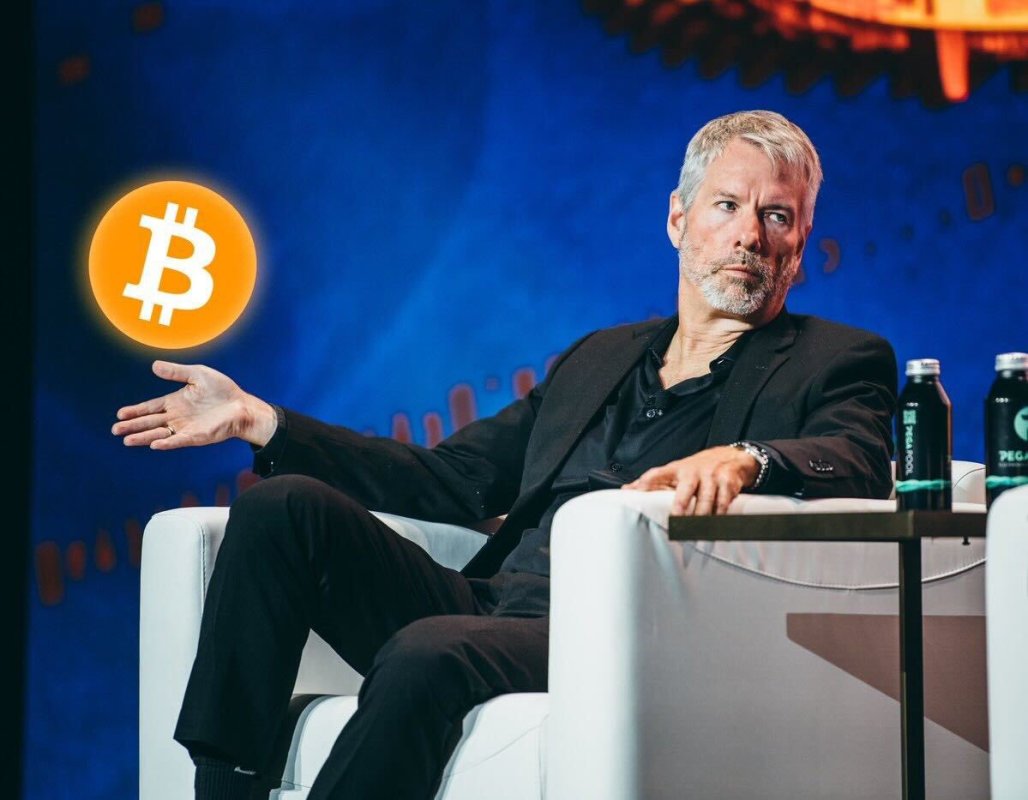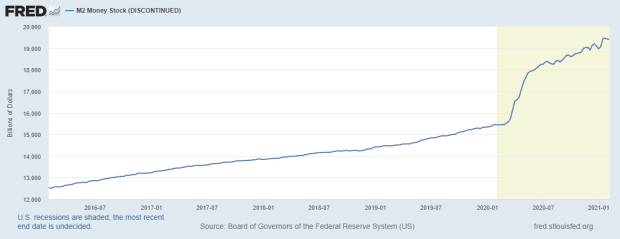Op Ed: How Many Wrongs Make a Wright?

In other articles and on social media, some people have called into question Craig Wright’s character on a personal level and tried to establish patterns of fraudulent business practices not specifically related to the matter at hand. While my research led me to examine these allegations, I decided to narrow the focus of this particular article on evidence solely as it relates to Wright’s claims that he is Satoshi Nakamoto, the creator of Bitcoin.
Craig S. Wright burst upon the Bitcoin scene in 2015 as a mysterious and controversial figure who claimed to be Satoshi Nakamoto, the pseudonymous creator of Bitcoin.
I actually crossed paths with him on Twitter several times in 2014 (when he used the now-deleted handle @dr_craig_wright), but I found most of his tweets difficult to follow and I generally dismissed him.
But not everyone did.
Gavin Andresen after announcing that he was convinced that Craig Wright was Satoshi Nakamoto
In 2017, I met Craig Wright in person at the Future of Bitcoin conference in Arnhem, Netherlands. He was much more personable when not standing on a stage with cameras pointed at him, though he still seemed pretty stubborn and tended to speak in ways that I found more confusing than enlightening.

Over the years, I had assumed that Wright would discredit himself to the point that we no longer had to hear about him, but he has persisted. Most recently he has taken to legally threatening people who publicly proclaim that Wright is not Satoshi. But I posit that Satoshi Nakamoto no longer has any power over Bitcoin — the question of Satoshi’s true identity is but an irrelevant curiosity.
I believe the relevant question is whether or not Wright is credible: After considering the evidence presented in this post, you can make a better-informed decision.
The following represents much of the relevant information about Wright’s history with Bitcoin and its community that I could find, compiled into a format that will hopefully make for an easy reference.
Satoshi Evidence and Lack Thereof
Is it possible that Wright is somehow connected to Satoshi and the creation of Bitcoin? Well, it’s not a connection that’s (as yet) possible to disprove — and Wright appears to be counting on that.
His latest response to questions about a lack of evidence for this connection is that he won’t bend to pressure to “disclose his financial records” and that key ownership does not prove anything. Supposedly his work should be sufficient proof.
What we know and can prove is that:
- He has a documented history of questionable statements and activities.
- He has a history of appearing to exaggerate his academic credentials.
- He has made a multitude of technical errors in his writings that call his understanding of Bitcoin and internet technology into question.
- His writing style (according to text analysis) and demeanor do not appear to be the same as those of the Satoshi whose writings are archived here.
- Wright once said: “I am a lawyer and this [financial law] is my area of speciality,” whereas the real Satoshi, when asked about how a financial law applied to Bitcoin, said, “I am not a lawyer and I can’t possibly answer that.”
- Wright once said: “At no point have I said that Bitcoin is a cryptocurrency,” and yet Satoshi called Bitcoin a cryptocurrency on several occasions.
- Wright once said that he is an “academic coder” who has no idea about “real world coding” but Satoshi has said, “I’m better with code than with words though.”
- In 2008, just six months before the anonymous Satoshi Nakamoto appeared, Wright made a public post stating, “Anonymity is the shield of cowards, it is the cover used to defend their lies. My life is open and I have little care for my privacy.”
- In February 2011, he seemed unaware of Bitcoin at all, as he was thinking about starting a gold-backed payment system.
- In August 2011, he began to mention Bitcoin in his writings, but he called it “Bit Coin, whereas Satoshi didn’t use a space or capital C in emails or forum posts. There was one instance of “BitCoin” in the early codebase, but Satoshi himself later corrected the capitalization.
- He actively bought and traded coins on Mt. Gox in 2013 and 2014.
- He once asked why you would use Xs rather than zeros in a burn address. Satoshi Nakamoto invented the Base58 encoding scheme used for these addresses, which intentionally excludes numbers and letters that look similar, such as zero and the letter O.
- He once claimed that Bitcoin’s block size was set in the block header (it’s not).
- He once claimed that Satoshi chose the secp256k1 curve due to bi-linear pairing properties but Satoshi once said that “I didn’t find anything to recommend a curve type so I just … picked one.”
- In an interview with GQ, Wright claimed, “I haven’t moved [any bitcoins]. I have sent them to Hal Finney and Zooko and that was it. Full stop.” But in 2009 Satoshi Nakamoto sent 82.51 BTC to developer Mike Hearn.
- He has thus far failed to provide simple cryptographic proof that he controls keys belonging to Satoshi after promising to do so.
- The cryptographic “proof” he did provide has been widely debunked by numerous experts including Patrick McKenzie, Dan Kaminsky and Robert Graham.
Some of Wright’s supporters have claimed that all of the above are part of an elaborate ruse to throw us off the trail and that he was coerced into announcing his identity as Satoshi.
What we can see from historical mailing list posts is that Wright was involved in the cypherpunk and infosec communities. As such, Wright is better positioned than most people to pose as a Satoshi candidate. But even as a member of these communities, he did not gain much of a positive reputation.

“I Am Satoshi”: Failed Claims
Near the end of his “coming out” as Satoshi, Wright told BBC News that “I will come on camera once and I will never ever be on camera again, on any TV station or any media. Ever.”
As you will see from the following documented evidence, Wright did not uphold this promise. Rather, he has remained in the spotlight, often insinuating that he created Bitcoin while avoiding (or failing) to actually prove it.
Failure to Establish Key Ownership
On May 3, 2016, Wright promised to spend some of Satoshi’s coins. He also published this (now-deleted) post on his blog, where he promised to show extraordinary proof that he was Satoshi.
In “The Satoshi Affair” (featured here in the London Review of Books), writer Andrew O’Hagan describes the following events of May 4, 2016: A “new (and final) proof session was intended to blow away the doubts,” when Wright was supposed to send a Bitcoin transaction to Andresen and a BBC journalist:
“Wright was worried about a security flaw in the early blockchain that would make it risky for him to move Bitcoin, exposing him to exploitation or theft. My sources later said Andresen understood the problem and confirmed it had been fixed. But Wright continued to worry and showed great reluctance about offering the final proof. Then he left the room abruptly and didn’t come back.”
After this first failed attempt at cryptographically proving he had Satoshi’s keys, he apologized and made it seem as if he was finished.

Source: http://archive.is/OxGhp
Unconvincing Cryptographic Signatures
In 2016, Wright wrote a lengthy blog post about how to verify cryptographic signatures, in which he pasted a signature without specifying the message that it verified. It didn’t take long before experts determined that the signature in question was one from this Bitcoin transaction rather than from one that signed some text of Jean-Paul Sartre.
GitHub contributor Patrick McKenzie summarized the post well:
“Wright’s post is flimflam and hokum which stands up to a few minutes of cursory scrutiny, and demonstrates a competent sysadmin’s level of familiarity with cryptographic tools, but ultimately demonstrates no non-public information about Satoshi.”
Security researcher and blogger Dan Kaminsky explained why he believes the signature provided by Wright may be fraudulent:
“Wright is pretending he has Satoshi’s signature on Sartre’s writing. That would mean he has the private key, and is likely to be Satoshi. What he actually has is Satoshi’s signature on parts of the public Blockchain, which of course means he doesn’t need the private key and he doesn’t need to be Satoshi. He just needs to make you think Satoshi signed something else besides the Blockchain — like Sartre. He doesn’t publish Sartre. He publishes 14% of one document. He then shows you a hash that’s supposed to summarize the entire document. This is a lie. It’s a hash extracted from the Blockchain itself.”
In a Motherboard article titled “Craig Wright’s New Evidence That He Is Satoshi Nakamoto Is Useless,” writers Jordan Pearson and Lorenzo Franceschi-Bicchierai agreed, saying that “Wright simply reused an old signature from a bitcoin transaction performed in 2009 by Satoshi.”
Altered Evidence?
It looks as if sometime between 2014 and 2015 Wright could have gone back and altered an old 2008 blog post to make it appear he had been working on cryptocurrency in 2008.

Original (2014 snapshot) versus altered (2015 snapshot)
One of the pieces of evidence referenced by Wired and Gizmodo in their “outing” of Wright as Satoshi was Satoshi’s PGP key, but that ended up being debunked, as it was shown that the keys were backdated.
Furthermore, a sleuth on Reddit claimed that according to registration information, a domain shown in one of Wright’s supposed emails to Kleiman — a key piece of “evidence” that Wright is Satoshi — was not purchased by Wright until January 23, 2009: 10 months after the date on the email.

These emails were sent to Gizmodo, which speculated that the leaker may very well have been Wright himself.
More Debunked Cryptographic Signatures
On November 3, 2018, someone asked a question on StackExchange about calculating the signature for the transaction in which Satoshi sent BTC to Hal Finney in block 170. Less than two weeks later, Bitcoin Cash underwent a contentious fork between the ABC and Satoshi Vision clients, the latter of which was backed by Wright and nChain.
Within 24 hours of the fork, the Twitter @satoshi account, which had been posting Satoshi quotes and white paper excerpts for a number of months, started posting uncharacteristic tweets that sounded a lot like they came from Wright. One of these tweets (later deleted) was the calculation of a signature, but Bitcoin devs quickly explained why it was fraudulent:
As Bitcoin developer Pieter Wuille noted, “ECDSA signatures where the message isn’t a hash and chosen by the ‘signer’ are insecure.” This time the signer just published “hash,” r, s tuples. The hash part of ECDSA is integral to the algorithm. If the verifier doesn’t run the hash themselves, the security properties don’t hold.
Jimmy Song has written a detailed article explaining how easy it would have been for anyone, including Wright, to create worthless but believable signatures. In fact, a tool has been released that makes it easy for anyone to create signatures in exactly this fashion.
The Altered Blacknet vs. Bitcoin White Papers
In February 2019, Wright tweeted a claim that he had submitted a research paper in 2001 to the Australian government that had the exact same abstract as the Bitcoin white paper. However, there already was a white paper draft that had been disseminated prior to being publicly posted on the cypherpunks mailing list. This presumably backdated white paper looks like the final version rather than the draft, in that it includes all of the contributed corrections that would not have been made until seven years after the BlackNet paper of 2001.

Source: https://www.reddit.com/r/btc/comments/apc9c1/craig_wright_caught_lying_again/
The Case of Kleiman’s Questionable Bitcoins
Though not directly linked to evidence of Wright’s claims that he is Satoshi, scrutiny of Wright’s interactions with computer forensics expert Dave Kleiman (who has also been rumored to be the real-life programmer behind Satoshi) offers some insight into his overall credibility and relationship with the truth.
In 2018, relatives of Kleiman filed a lawsuit against Wright in U.S. federal court in Miami, represented by a prominent law firm. The lawsuit purports that Wright fraudulently acquired large numbers of bitcoin owned by Kleiman by forging various documents. However, there is evidence that the very existence of those bitcoins is highly questionable.
In a live WizSec blog post dated February 27, 2018, Kim Nilsson demonstrated that many of these addresses can be accounted for and attributed to other people. One such address (16cou7Ht6WjTzuFyDBnht9hmvXytg6XdVT) that the author identified only as a “MtGox user” likely belongs to Roger Ver, and was used on Roger’s Bitcoinocracy site to “vote” in favor of various statements. In fact, the original version of the WizSec blog post attributed it to Ver before being changed to just say a “MtGox user.” Ver has been questioned about this address, but, as far as I can tell, he has never denied that it belongs to him.
Wright vs Satoshi Sleep/Activity Schedules
From examining the public timestamps on over 100 blog posts by Wright during the 2009 & 2010 time period and comparing them against over 800 public timestamps from emails, forum posts and code commits by Satoshi during the same period, we can gain some insight as to the sleep patterns of each. It’s pretty clear that Wright was generally inactive from 13:00 to 18:00 UTC while Satoshi was inactive from 7:00 to 12:00 UTC. As such, Wright appears to maintain a sleep schedule consistent with someone living in the AEST time zone (Australia) while Satoshi maintains a sleep schedule consistent with the EST time zone (North American east coast and part of South American west coast). While it’s possible that Wright was meticulously maintaining two separate schedules for each identity, Occam’s Razor suggests that the reason for the different patterns is probably because they belong to different people.


The raw data and calculations for these charts are available here.
Technical Errors and Shortcomings
Whoever really was acting as Satoshi Nakamoto introduced one of the most elegant projects to date in the internet era. The creation of Bitcoin was well ahead of its time and the real Satoshi had a clear grasp of the technical concepts it introduced, as well as a willingness to admit the gaps in his or her knowledge. By outlining some of the more notable examples where Wright has demonstrated a lack of technical knowledge, a recurring characteristic that the pseudonymous Satoshi did not readily demonstrate becomes apparent.
Wright is the “chief scientist” at nChain and yet he often makes questionable technical claims.

In addition to the tweet above, Wright has claimed that internet bandwidth will exceed local bus speeds, which is impossible given that the data on both ends of an internet connection between two computers are stored on hard drives.

Source: https://archive.fo/SwjEf
He also once claimed that a user with a 56K modem could download 32 MB in 9.5 minutes. It would actually take 80 minutes, which suggests that Wright made the mistake of confusing bits per second with bytes per second.

Source: https://archive.fo/xvf7l
He’s also made a very odd claim regarding DNA:

Source: https://archive.fo/5it3L
Time for a science and math lesson! A strand of human DNA is comprised of approximately 200 billion atoms. DNA is made of only five elements: carbon, hydrogen, oxygen, nitrogen and phosphorous. As such, if we could build a quinary storage system, then one DNA strand could store up to 1 trillion bits (~125 GB) of data. Current estimates put the entire internet at 5 to 10 zettabytes, so this claim is off by at least ten orders of magnitude.
Wright also once claimed that signed integers are less useful than unsigned integers and that this is why more complex logic can’t happen on Bitcoin. Supposedly, this is because the ability to overflow an unsigned integer “enables mathematical functions.”
Meanwhile, most computer scientists will tell you that integer overflow results in data loss and unintended application behavior — it should be avoided for the reliability and security of the application.
Wright also claimed that secp256k1 could be used for bilinear pairing. This claim was refuted by both Andrew Poelstra (a cryptographer at Blockstream) and Vitalik Buterin (creator of Ethereum).

Source: https://archive.fo/Kwyfb
He didn’t demonstrate any such thing. Rather, he claimed that Bitmain might have the private key to the burn address. Of course, this is an impossible claim and the math is irrefutable — it would take on the order of 2¹⁶⁰ calculations to brute-force the private key, and there isn’t enough computing power in the world to do that in any reasonable time frame.
Many of Wright’s published works have been subjected to harsh scrutiny. Peter R. Rizun analyzed a paper Wright wrote about selfish mining and determined that it contained plenty of errors and unclear assumptions:
“The author tries to explain some very basic aspects of Bitcoin mining, yet fails due to careless notation, multiple errors in his equations, and a fundamental misunderstanding of what it means for Bitcoin mining to be ‘memoryless.’”
Similarly, Paul Sztorc reviewed a paper Wright wrote about Segregated Witness functionality titled “The illusion of scale in segregated witness” and found it to be riddled with mistakes and nonsensical claims.
“The biggest problem is the equation of exchange (PY=MV), which CSW interprets backward. He initially uses ‘P’ correctly as ‘price level’ (ie, BTC/stuff), but then he switches it for ‘the price of money’ (which would be stuff/BTC). So … it’s backwards. In other words, everything about velocity is the opposite of what he says.”
The Million-Bitcoin Question: Why Bother?
Nik Cubrilovic posted an explanation that makes sense, given the evidence at hand. His post has been deleted but the archived version can be viewed here.
Prior to his “outing” as Satoshi, Cubrilovic says, Wright had been involved in a tax rebate scheme against the Australian government. Wright has operated under a number of different legal entities: Hotwire, DeMorgan, CloudCroft, Panopticrypt, Coin-Ex, Denariuz, Tulip Trading, Craig Wright R&D, Permanent Success Limited, Information Defense, Integyrs, Global Institute for Cybersecurity Research and dozens of others as mentioned on page 53 of this court transcript, an administrators’ report for Hotwire in 2014. This report details three relevant points:
1) How Hotwire operated:
“The Company’s main activity was the acquisition of various e-learning and e-payment software and undertaking research and development work in respect of this software and for software owned by related entities.”
2) How Hotwire was allegedly funded:
“The Directors have advised that $30 million was subscribed to by the shareholders in paid up capital and this was injected via Bitcoins.”
3) How that funding was spent:
“The Company applied its equity as follows:
– $29 million to acquire software from the Wright Family Trust (‘the Trust’); and
– $1 million to fund day to day trading activities.”
What Wright did was establish a company for the purpose of carrying out research and development on e-learning software it had acquired from Wright’s own trust.
Wright would inject $30 million in bitcoin to fund the company, $29 million of which would be paid to Wright’s trust to acquire the software and $1 million of which would fund operational costs — including an office in Sydney and 40 employees.
The purpose for the structure becomes clear in the next action the company takes:
“Further to incurring a range of expenses, the Company lodged its GST return for the September 2013 quarter, claiming a GST refund of $3.1 million (‘the GST refund’). After various discussions and correspondence, the ATO issued a notice to the Company on 20 January 2014 notifying that it intended to withhold the refund pending further verification of transactions and the treatment of Bitcoin.”
The sales tax (GST) component of the $29 million invested by Wright into the company was eligible for a refund. Thus, by shuffling around bitcoins between entities you control, it is possible to trigger a sales tax refund (in real cash). However, it’s unclear whether $30 million in bitcoin was ever shuffled around in the first place.
Another Wright entity, DeMorgan, made the largest-ever R&D tax concession claim in Australia — as per its own press release. I haven’t been able to find any evidence to support this claim, however.
The R&D tax concession is a program in Australia where companies investing in R&D are eligible for a 45 percent tax refund on each dollar spent. According to reporting by Forbes, the supercomputers that were claimed to be part of this spending didn’t exist, so it is possible that the refund request could be construed as an attempt to make a false claim.
As reported by The New Yorker:
“Receivership documents explaining Hotwire’s apparent insolvency indicate that Wright was claiming losses ‘due to the collapse of Mount Gox.’ This reference to the 2014 crash of the Mt. Gox bitcoin exchange shows that Wright has been trying to explain his bitcoin losses to the authorities for some time.”
Why does Wright say he is Satoshi? Cubrilovic theorizes that Wright simply spun a web of lies that was too complex to unwind, so now he has to keep taking it further.
“It suited Wright to be Nakamoto when he needed to raise money from investors, or to talk his way out of a problem. Nakamoto, as most know, is sitting on billions of dollars worth of Bitcoin.”
On the other hand, Cubrilovic posits that Wright might not have wanted his alleged identity as Satoshi Nakamoto to become more widely known, lest he eventually “bump into somebody” who might challenge him on the claim and require some form of hard proof.
“In terms of why the story of Wright being Nakamoto was made public I can offer a few theories. The first is that one too many people found out and one of them, potentially a disgruntled employee or investor, decided to leak [the news] as an act of revenge. The second theory is that Wright, knowing it was over for his companies and that authorities were closing in, concocted the leak himself as the first step towards a new life in London as Satoshi Nakamoto (Wright fled Australia and has not returned).”
According to O’Hagan:
“A few weeks before the raid on Craig Wright’s house, when his name still hadn’t ever been publicly associated with Satoshi Nakamoto, I got an email from a Los Angeles lawyer called Jimmy Nguyen, from the firm Davis Wright Tremaine (self-described as ‘a one-stop shop for companies in entertainment, technology, advertising, sports and other industries’). Nguyen told me that they were looking to contract me to write the life of Satoshi Nakamoto. ‘My client has acquired life story rights … from the true person behind the pseudonym Satoshi Nakamoto — the creator of the bitcoin protocol,’ the lawyer wrote. ‘The story will be [of ] great interest to the public and we expect the book project will generate significant publicity and media coverage once Satoshi’s true identity is revealed.’”
I found this snippet to be particularly interesting because Jimmy Nguyen, an attorney who specialized in entertainment and intellectual property, went on to become the CEO of nChain, a tech firm, while prior CEO Stefan Matthews became Chairman of the Board. Robert MacGregor, the founder and CEO of Canada-based money-transfer firm nTrust, who met Wright through Matthews, claims that the plan for nChain was not to build technology, but rather to attain a huge exit by selling intellectual property.
Wright was allegedly paid a significant amount of money to “come out” as Satoshi, according to O’Hagan in “The Satoshi Affair”:
“After initial scepticism, and in spite of a slight aversion to Wright’s manner, MacGregor was persuaded and struck a deal with Wright, signed on 29 June 2015. MacGregor says he felt sure that Wright was bitcoin’s legendary missing father, and he told me it was his idea, later in the drafting of the deal, to insist that Satoshi’s ‘life rights’ be included as part of the agreement. Wright’s companies were so deeply in debt that the deal appeared to him like a rescue plan, so he agreed to everything, without, it seems, really examining what he would have to do. Within a few months, according to evidence later given to me by Matthews and MacGregor, the deal would cost MacGregor’s company $15 million.
“‘That’s right,’ Matthews said in February this year. ‘When we signed the deal, $1.5 million was given to Wright’s lawyers. But my main job was to set up an engagement with the new lawyers … and transfer Wright’s intellectual property to nCrypt’ — a newly formed subsidiary of nTrust. ‘The deal had the following components: clear the outstanding debts that were preventing Wright’s business from getting back on its feet, and work with the new lawyers on getting the agreements in place for the transfer of any non-corporate intellectual property, and work with the lawyers to get Craig’s story rights.’ From that point on, the ‘Satoshi revelation’ would be part of the deal. ‘It was the cornerstone of the commercialisation plan,’ Matthews said, ‘with about ten million sunk into the Australian debts and setting up in London.’
“The plan was always clear to the men behind nCrypt. They would bring Wright to London and set up a research and development centre for him, with around thirty staff working under him. They would complete the work on his inventions and patent applications — he appeared to have hundreds of them — and the whole lot would be sold as the work of Satoshi Nakamoto, who would be unmasked as part of the project. Once packaged, Matthews and MacGregor planned to sell the intellectual property for upwards of a billion dollars. MacGregor later told me he was speaking to Google and Uber, as well as to a number of Swiss banks. ‘The plan was to package it all up and sell it,’ Matthews told me. ‘The plan was never to operate it.’”
But who was the mysterious benefactor funding all of this activity? Signs point to a man named Calvin Ayre, a Canadian billionaire best known for founding the online gambling company Bodog. Once again, according to “The Satoshi Affair”:
“Calvin Ayre is one of the topics the team routinely went dark on. When I first met Wright, he called him ‘the man in Antigua’. MacGregor never mentioned him at all during our early meetings. When I later told him that Ramona had mentioned a big man in Antigua, he said he didn’t mind talking about him, but didn’t bring his name up again. When, in February this year, they took Wright to Antigua for a pep talk, I emailed Matthews to ask if I could come too, and he didn’t reply. Wright, in a low moment, later asked me if I’d told MacGregor they were the ones who let the cat out of the bag about Ayre. I said it wasn’t them: Ayre’s name had first been mentioned to me by Matthews. The Antigua meeting was being arranged when I went out for dinner with Matthews, and he referred to Ayre freely without ever asking that it be off the record. MacGregor never went into detail about Ayre’s involvement but both men’s regular visits to Antigua made me wonder about the extent of the connection. Matthews, explicit as usual, always spoke about Ayre as if he was the capo di tutti capi of the entire affair, though I have no other evidence that Ayre was anything but an interested observer. Interestingly, nCrypt’s only shareholder (one share worth one pound) is nCrypt Holdings, registered in Antigua.”
According to this 2017 Reuters article, nChain Holdings was sold to Malta-based High Tech Private Equity Fund SICAV plc. The website listed in this press release for said fund, however, no longer exists.
“nChain said in an emailed response to questions from Reuters that neither Ayre nor Wright had a stake in it before or after the sale. It said the company previously acquired Wright’s assets and intellectual property, and he now held the post of chief scientist.”
nChain’s statement could mean several things — perhaps neither man owns a stake directly, but they do indirectly through a series of other legal entities. (Check the diagram provided below to get an idea of the bigger picture.)
It could also mean that if Wright had any stake, he has already “sold out” and now is just trying to fulfill the master plan to sell intellectual property — or another theory is that he’s just trying to run out the clock, making it look like he’s trying to do so.
According to the Reuters article, “A person close to the deal said $300 million had been invested in nChain, but it was not clear over what period of time.”
An intriguing quote from Matthews regarding the investors:
“The people that I work with are capable of deciding this was a $30 million bad decision and write it off.”
An article published by Elmo Keep in Splinter summarized O’Hagan’s “The Satoshi Affair”:
“Overall, the piece adds credence to the accusation that Wright perpetuated a vast and complex fraud to convince the world that he is Satoshi Nakamoto in order to get out from under millions of dollars worth of debts he had accumulated in Australia with the tax office and other creditors. And if it is a scam, it now appears to have included a large number of co-conspirators and/or victims, including the media outlets who were used to facilitate Wright’s outing.”
The article seems to suggest that Wright may be performing a sophisticated form of advance-fee scam or affinity scam, whereby he uses his credibility to convince investors to part with their money for the promise of future returns.
An alternative theory is that Stefan Matthews is a linchpin to the arrangement mentioned earlier and that he brought Calvin Ayre into this particular scheme.
According to O’Hagan, Matthews is an Australian IT expert whom Wright had known for 10 years, since they both worked for the online gambling site Centrebet. Matthews later went to work for Bodog. Matthews was also a director for Wright’s company DeMorgan, so they likely remained in close contact. In “The Satoshi Affair,” Matthews is quoted as saying:
“I get what I get paid by Calvin [Ayre]. Calvin is the only allegiance I have, then and now.”
If you look into Ayre’s background, he has been building an “offshore” gambling empire that takes advantage of jurisdictional arbitrage in order to offer services that, when combined, are arguably illegal in some countries. By spreading around his operations, he has been able to not only maintain them in such an adversarial environment but to grow them into a huge operation. He’s a shrewd businessman who is well versed in exploiting legal loopholes. As Ayre once described his operations in a Forbes interview:
“We run a business that can’t actually be described as gambling in each country we operate in. But when you add it all together, it’s Internet gambling.”
Court records show that Ayre’s not without his own problems though, as he was a fugitive from the IRS and other U.S. authorities due to money laundering charges filed in 2012. During the five years he’d spent on the run, U.S. authorities seized over $68 million in assets from him but eventually allowed him to plead to a misdemeanor charge in return for dropping all of the felony charges.
In my opinion, Ayre is in a situation where a censorship-resistant and unseizable cryptocurrency is highly desirable. Even when he first began operating in the 1990s, his gambling site was one of the few that didn’t use third parties like Western Union to transfer money — it sent checks directly to users. If I was Ayre, I’d want all of my gambling sites to use cryptocurrency and I’d want to store a significant portion of my wealth in cryptocurrency.
Why would Ayre choose to go the Bitcoin Cash (and later Bitcoin Satoshi Vision) route rather than just using the already well-established Bitcoin network? Was he convinced that BSV was better suited for gambling, or that he’d be better positioned to influence BSV’s development? Or was it that Ayre was already incredibly invested in Wright’s success and was ambivalent about the technical details? Or could Ayre’s mining operations simply have been a useful way for him to launder money? Freshly minted coins are pretty much impossible to tie to illegal activity. Electricity goes in and untainted money comes out.
Economically rational SHA256 miners should mine the most profitable network since switching costs are fairly low. We can observe from the above charts that BSV miners appear to not be economically rational – they are leaving money on the table, so to speak. While BCH miners appear to drop off the BCH network (and probably switch to mining BTC) when it becomes more profitable to do so, BSV miners have been consistently mining at a loss, in comparison to if they were mining BTC instead. This begs the question: Are BSV miners actually irrational or is there another factor at play that makes it rational for them to pass over an opportunity for greater profits? One plausible explanation is that as of April 26 2019, over 80 percent of the BSV hashrate is controlled by 2 pools: CoinGeek (owned by Ayre) and BMG Pool (owned by nChain) and that they are mining suboptimally in order to keep up appearances of strength. This reasoning makes sense given that BSV is built upon an ideology driven by Nakamoto Consensus: “He who controls the hashrate controls the network.”


In the chart below, an internet sleuth on Reddit theorized about a possible web of relationships.

Patents
Wright has been prolific in his efforts to file patents for other blockchain- and computer-science-related work. These patents would be much more interesting to potential investors if filed by the man behind Satoshi, possibly serving as motivation for Wright’s claims.
Wright has been filing patents for a few years under EITC Holdings, nChain Holdings, NCIP Holding and nTrust. Filings of his have been found at the Intellectual Property Office of the United Kingdom, European Patent Office, U.S. Patent and Trademark Office and Taiwan Intellectual Property Office. A (now-deleted) site called bitcoinpatentreport.com detailed some of the activity.
At the time of this writing, a total of 264 patents by Wright’s companies have been published by the British patent office, while the European patent office shows 167 applications for nChain. PatentScope sees 296 applications, while Google Patents shows a total of 363.
- EITC Holdings: 73 filings
- nChain Holdings: 145 filings (Britain), 174 filings (Europe)
- NCIP Holdings: 7 filings
- nTrust: 0 filings
On March 7, 2019, nChain CEO Jimmy Nguyen wrote that nChain had filed its 666th patent application. Note that filings are generally published with a time lag of up to 18 months, so we’ll have to wait another year to know for sure.

Source: https://archive.fo/vrhBm

Source: https://archive.fo/PPER9
These tweets with specific claims of patent applications filed are interesting because they conflict with the number claimed by nChain’s CEO in March of 2019. Wright claims 700 patents filed as of June 2018 and 1,000 filed as of December 2018, while Nguyen claims 666 as of March 2019.
While nChain may not be filing as many applications as Wright claims, it certainly is filing a lot. But filing applications is not the same as having patents granted.
From a cursory review of some of the applications, it appears that patent examiners are finding prior art for many of nChain’s claimed novel inventions; you can see some of the patent examiner opinions here.
Take, for example, Wright’s patent application for a threshold signature scheme. The patent examiner determined that 31 of the 34 claims of novelty were, in fact, not novel. Or this patent application for UTXO time locks, for which the patent examiner determined 14 of the 17 claims were not novel.
In February 2017, Wright submitted a patent titled “Agent-based Turing Complete Transactions integrating feedback within a Blockchain System,” basically trying to patent any computer program that uses a blockchain as its data store. In a Medium post dated September 4, 2018, Jonathan Toomim completed an in-depth analysis of Wright’s proposal and demonstrated ways in which P2Pool, Ethereum and Counterparty could be considered prior art.
Evasion of Criticism
On June 30, 2018, Wright blocked me on Twitter and made this post.

Source: https://archive.fo/D4zrc
I found this to be a bit odd because I had muted him many months before and stopped interacting with him after I challenged one of his technical claims about the node network graph of Bitcoin Cash. Instead of answering my straightforward question, he countered with a bombardment of questions of his own that did not appear particularly relevant.

In the following weeks and months he continued blocking quite a few people, even those who supported Bitcoin Cash, perhaps in anticipation of nChain planning to push a contentious hard fork for Bitcoin SV.




Apparent Misrepresentation of Academic Credentials
Among Wright’s lengthy list of claimed accomplishments, there are quite a few academic achievements, including PhDs that he has used as the basis for his title of “Dr.”
In 2017, he pulled a stunt at a Bitcoin Meetup in Zurich, where he brought a “wheelbarrow of degrees” on stage. Photos of these degrees and certificates were subsequently published on nChain’s website.
As we can see from this list, Wright’s only PhD appears to have been completed in April 2017 at Charles Sturt University (often ranked around number 30 in Australia and number 800 globally), which is where most of his degrees appear to have come from.
Wright’s now-deleted LinkedIn profile also claimed a “PhD, Computer Science 2009–2012” from Charles Sturt University, but the school put these claims in question with a media release:
Update: Australian university says Craig Wright did not complete a PhD as claimed. https://t.co/DmqU0sVlwy pic.twitter.com/AaubGgYD9U
— Mashable (@mashable) December 11, 2015
That PhD in computer science is not listed among his degrees. Nor is the Masters in Systems Development that he has claimed. Neither is listed on CSU’s alumni education verification site either.
That same LinkedIn profile claimed that he’d earned a “Doctor of Theology, Comparitive Religous [sic] and Classical Studies 1998–2003” from “Guess” — he later stated that his theology studies were through SOAS (University of London’s School of Oriental and African Studies).

Source: https://twitter.com/ProfFaustus/status/1083339312219996160
However, it seems clear from my research that he has never published anything (such as a PhD thesis) through SOAS as its research archives hold nothing with his name on it.
Nevertheless, in 2015, Wright remotely participated in a Bitcoin conference and claimed he had “a couple doctorates.” It’s quite clear that Wright had given himself the title of “Dr.” and used it for several years before rightfully earning it.
This media statement issued by CSU further clarified that, despite Wright stating he was a lecturer and researcher at the university, “[b]etween May 2011 and May 2014 Mr. Wright was an adjunct academic at CSU. Adjunct academics undertake unpaid academic work and are not formally employed by the University.”
I have been unable to verify Wright’s LinkedIn claim that he earned a “Master of Science (MSc), Finance (Quantitative Finance)” in 2015–2017 through the University of London (presumably through SOAS again). A Mashable request for academic records appears to have been unfulfilled. I sent my own request and SOAS replied that I needed written consent from the individual in order to have the information released. This seems like a flaw to me; you’d think that academic institutions would want to help students accredit their academic credentials.
Military Service
Wright has referred to his time in the military on several occasions. I have looked into the record of his service and the tasks he allegedly performed at that time in order to confirm his claims.
The earliest record that I’ve been able to find of Wright referencing his military service in the cypherpunk community dates back to 1996, when Wright added a post to the cypherpunks mailing list:
“The few months I was unemployed after I left the military because of a confict [sic] of interests I earned money by doing whatever I could get.”
In 2008, Wright made a reference to this time in his life on a public mailing list:
“In 1989 I started a B.Eng/BSci double degree. I dropped out of the University of Queensland in 1992 (after my 3rd year). I have a reason for this. I had cancer. I though [sic] that it was better to go back to my studies after I knew I would live. Sorry, but we all have priorities.”
Years later, according to “The Satoshi Affair,” Wright said of his time in the military:
“‘They locked me in a bunker … and I worked on a bombing system. Smart bombs. We needed fast code, and I did that.’”
I found Wright’s claims about his military service intriguing, mainly because military service creates a lot of public records. So I strolled on over to the National Archives of Australia to see what information it would release to me. It took several months of painful bureaucratic back and forth, but I managed to retrieve 82 out of the 177 pages of documents on file for Wright. They are available here.
What do Wright’s public military records show?
- He was in the Australian Air Force Cadets at age 15 in 1986.
- He applied to the Australian Defence Force Academy to train as a pilot in 1987 but was rejected. Oddly enough, the psychologist’s report filed with this application is blank. It is possible that the completed one was withheld.
- He was a student at the University of Queensland from 1988 to 1989.
- He applied to the Royal Australian Air Force in 1989 and was accepted to a nine-year officer program with a sponsorship to the RAAF undergraduate program to study electrical engineering. The sponsorship offer noted that “should you fail to progress academically for whatever reason … you may be required to apply to repeat the year at your own expense.”
- He started his first semester in 1990 as an Officer Cadet.
- He passed one class, “Law of War,” in the first semester.
- Oddly enough, there is no mention of any engineering or math classes, but perhaps these records were withheld.
- A (hard to read) handwritten letter released by the archives appears to state that “Officer Cadets Bone and Wright were asked to show cause why they should be provided with continued RAAF sponsorship as they had failed semester 1/90.”
- Wright did send a letter regarding his undergraduate sponsorship standing later that year, but it was withheld by the archives.
- He went on SLWOP (special leave without pay) on March 15, 1990.
- He was discharged October 19, 1990, for “Reason 4.” (I’ve not been able to verify what “Reason 4” means.)
It’s interesting, to say the least, that this man who claims to be a lifelong academic with more than a dozen degrees appears to have failed out of his first semester in the RAAF, according to these public records.
Is it likely that he was given the responsibility to write code for bomb guidance systems as a first-semester cadet? Did he leave the military due to a “conflict of interest”? Records show he was at the RAAF in 1990, so what about his claim that he was studying at the University of Queensland from 1989 to 1992?
What Now?
Wright’s threats through his London-based lawyer against multiple posters may or may not wind their way through the court process. The lawsuit against Wright in federal court in Miami will continue; in fact, Wright recently was scheduled to sit for testimony in London, so we will be interested in learning more about that.
I, personally, am highly doubtful of many of Wright’s claims. He’s had four years to come forward with proof that he is Satoshi, and I, for one, am not satisfied.
On the bright side, it would appear that Wright has painted himself into a corner. He is now the figurehead of a fork of a fork of Bitcoin, operating in a tiny echo chamber that will be incredibly difficult to grow. In fact, it appears that there is a growing movement among exchanges to delist the BSV asset. It will be interesting to see how Craig & Co. make their exit — will it be with a bang or a whimper?
Wright thrives on attention, and the unfortunate result of this post is that it is a catch-22 — it will bring him more attention, at least temporarily. I believe we’ll all be better off if we let this chapter of Bitcoin come to a close.
Additional Sources
Numerous sources have been reviewed in connection with this op ed, and many are linked throughout. Below are links to further extended posts and compilations.
Andreas Brekken’s “Cult of Craig” compilation, now maintained at https://craigwright.online/ and https://www.stopcraigwright.com/
Bitcoin Wiki’s entry on Craig Wright
/u/Contrarian__’s plethora of Reddit posts
Jonald Fyookball’s compilation of Wright’s history
Nik Cubrilovic’s analysis of Hotwire
This is an op ed by Jameson Lopp. Opinions expressed are his own and do not necessarily reflect those of Bitcoin Magazine or BTC Inc.
This article originally appeared on Bitcoin Magazine.









